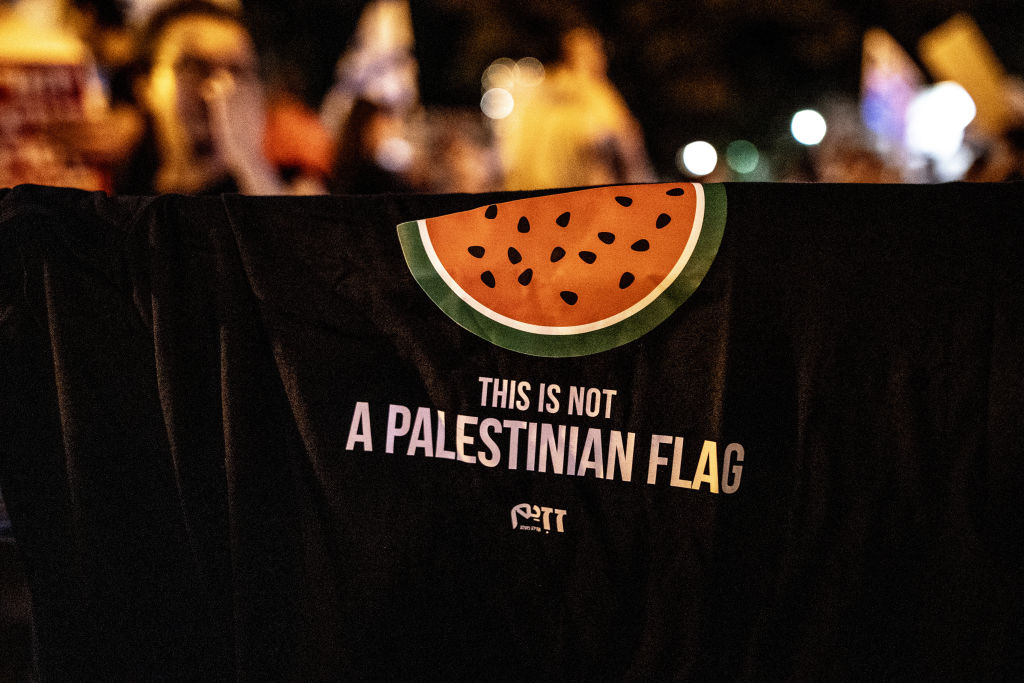The mighty watermelon—whether held in hand, depicted in art, or posted online as an emoji—is a powerful symbol for Palestinian people.
The fruit has once again cropped up on countless social media posts, in the wake of the Israel-Hamas war begun that left at least 10,000 Palestinians dead in Gaza under brutal Israeli bombing.
But how did this refreshing fruit emerge as a stealthy symbol for Palestinian solidarity? Here’s what you need to know.
A history of the Palestinian watermelon

The watermelon became a symbol of Palestinian resistance due to its representation of the national colors of the Palestinian flag (red, black, white, and green) when cut open. This symbolism emerged after the Six-Day War in 1967 when the Israeli government banned public displays of the Palestinian flag in Gaza and the West Bank. Palestinians started using the watermelon as a subtle way to display their national identity.
Also read: Why did US House censure lone Palestinian-American voice Rashida Tlaib?
The Israeli government did not merely suppress the flag. According to an interview with artist Sliman Mansour in The National in 2021, Israeli officials closed down an exhibition in 1980 at the 79 Gallery in Ramallah that included works by him and other artists like Nabil Anani and Issam Badrl. They informed us that not only was it illegal to paint the Palestinian flag, but it was also illegal to use certain colors. The officer angrily responded, “It will be confiscated,” to Issam’s question, “What if I were to make a flower of red, green, black, and white?” A watermelon will be seized even if it is painted, according to Mansour.
View this post on Instagram
As part of the Oslo Accords, which required recognition between Israel and the Palestinian Liberation Organization and were the first official accords to try to resolve the decades-long Israeli-Palestinian conflict, Israel lifted the ban on the Palestinian flag in 1993. It was agreed that the flag stood for the Palestinian Authority, which would be in charge of running Gaza and the West Bank.
The New York Times acknowledged the watermelon’s function as a stand-in emblem during the flag ban following the accords. “In the Gaza Strip, soldiers stand by, blasé, as processions march by waving the once-banned flag,” Times journalist John Kifner wrote. “In the past, young men were arrested for carrying sliced watermelons—thus displaying the red, black, and green Palestinian colors.”
Many ask why Palestinians use watermelon to represent their resistance? ???????? ????
The answer:
In occupied Palestine, the Israelis have banned the display of the Palestinian national flag. In response, Palestinians have adopted the watermelon, which has the same colors as their… pic.twitter.com/Evqzff7uz0
— The Palestinian (@InsiderWorld_1) November 3, 2023
In 2007, just after the Second Intifada, artist Khaled Hourani created The Story of the Watermelon for a book entitled Subjective Atlas of Palestine. In 2013, he isolated one print and named it The Colours of the Palestinian Flag, which has since been seen by people across the globe.
The use of the watermelon as a symbol persisted over the years, even after the ban on the Palestinian flag was lifted in 1993 as part of the Oslo Accords. It has continued to gain prominence in recent times, particularly in response to significant events affecting Palestinians, such as the 2021 Israeli court ruling in Sheikh Jarrah.
































